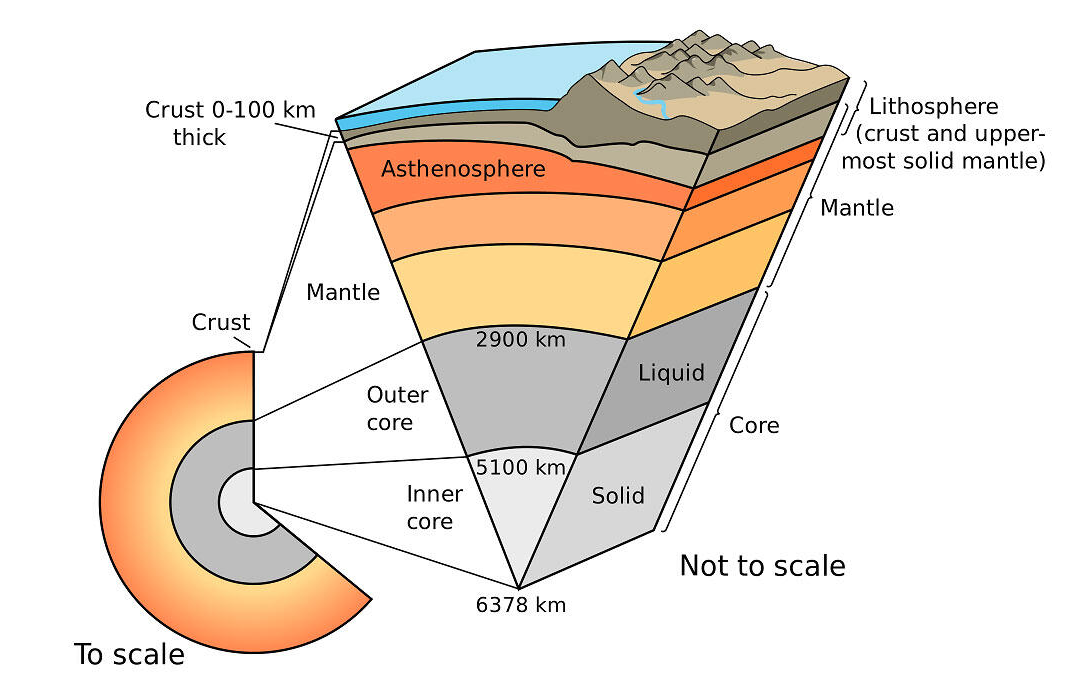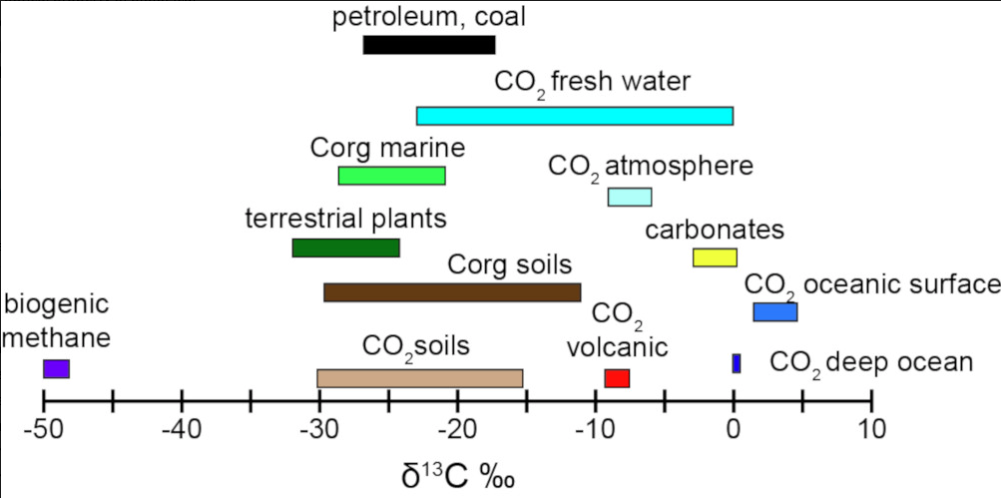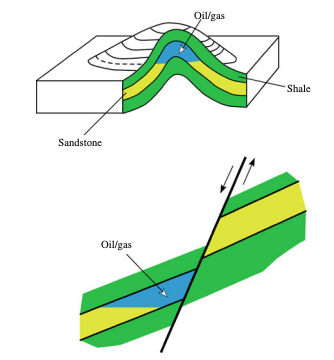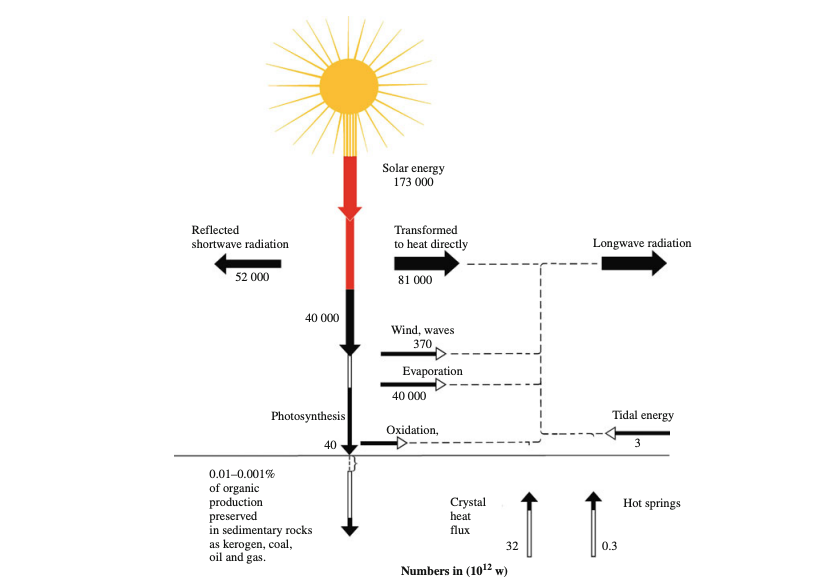

REVIEW
CLAIM: Oil and gas are not fossil fuels; they are a renewable energy source created by a geothermal reaction between the solid mantle and liquid core. Hydrocarbons are generated in the upper mantle, then transported through deep faults and deposited in Earth’s crust in any rock type and structural position.
The term ‘fossil fuel’ is widely used to describe hydrocarbons of biological origin, including coal, petroleum, and natural gas. Underlying this term’s widespread use is a general consensus about the biological origin of these materials on Earth – a consensus backed by scientific evidence, as will be discussed below. However, since the discovery of hydrocarbons, alternate hypotheses have popped up – often deemed as lacking adequate evidence by experts in geology. For example, in May 2024 a X/Twitter post with over 324,000 views claimed that ‘oil and gas are not fossil fuels; they are a renewable energy source generated in Earth’s deep interior by non-biological processes’. This post, which relies on a 2011 paper by Vladimir G. Kutcherov, has been reshared by the same X/Twitter user, gaining over 4.8 million views in total. Below we will investigate the post’s claims using available scientific evidence.
Scientific evidence indicates that the vast majority of hydrocarbons extracted on Earth are of biological origin
The origin of hydrocarbons falls into two main categories – biological (i.e., biogenic) or non-biological (i.e., abiogenic). The biogenic explanation is that major deposits of hydrocarbons – those that humans have discovered and extracted from – come from a long, complex process of burial of organic material, chemical transformation, subsurface transport (i.e., movement underground), and storage in rock layers in sedimentary basins. This is the accepted explanation for hydrocarbon formation on Earth[1], and that which is used by the multi-trillion dollar petroleum industry to successfully locate hydrocarbons. The previous fact is worth highlighting because the biogenic explanation of formation and its strong consensus is reinforced not only through scientific research, but also by industry imperatives to locate and extract hydrocarbons most efficiently for profit. For example, the Permian Basin in the U.S. is one of the largest hydrocarbon-producing locations in the world[2], and its geologic history and characteristics conform to the biogenic explanation of formation (i.e., burial and decomposition of biological material in a sedimentary basin). However, as noted above, the second explanation is abiogenic formation (i.e., forming non-biologically) – so where does this enter the discussion?
As it turns out, there is some evidence of abiogenic hydrocarbons. For example, scientists have found evidence that extreme conditions on other planetary bodies (e.g., Saturn’s moon, Titan) can seemingly produce abiogenic hydrocarbons. However, their existence is insufficient evidence to support the full claims being made, which require additional steps – like transport through deep faults and deposition in Earth’s crust – that are not supported by scientific evidence and empirical observations. By contrast, several lines of evidence indicate that major deposits of hydrocarbons on Earth are of biological origin. As explained by Dr. François Baudin, Professor of Geology at Sorbonne Université:
“while it cannot be denied that abiogenic processes lead to the formation of hydrocarbons, these mechanisms can hardly account for the quantity, diversity and location of oil occurrences on Earth. The idea that oil originates from sedimentary organic matter, i.e. organisms that have been living, is widely demonstrated by natural observations, laboratory analyses and experiments”.
Hydrocarbons are found in specific locations on Earth, showing evidence of their biological origin
One of the main lines of evidence for the biogenic explanation of formation is that hydrocarbons are found in specific locations on Earth – almost always in sedimentary basins. The theory of an abiogenic origin of hydrocarbons on Earth, as explained in Kutcherov 2011, claims that hydrocarbons form in Earth’s upper mantle (~80-200 kilometers [km] deep) and are transported through deep faults up to Earth’s crust (~0-100 km deep). However, if this were the case, there should be evidence that hydrocarbon deposits are concentrated near these fault systems and distributed in various rock types (e.g., sedimentary, metamorphic, and igneous). Instead, geologists have found that nearly all hydrocarbon deposits are in sedimentary basins – low points where sediment and biological matter accumulate over time and form sedimentary rocks. As explained by Baudin, “more than 99% of the world’s oil reserves are located in sedimentary basins and occurrences in magmatic [i.e., igneous] or metamorphic rocks are rare” (Figure 1). He continues, “no oil evidence has ever been found along faults in non-sedimentary continental rocks and extremely rare are oil seeps in the tens of thousands of mines dug in non-sedimentary rocks”.
Figure 1 – Simplified geological map of the world highlighting the overlap of petroleum provinces (i.e., oil locations) in red and sedimentary basins in gray. Source: Encyclopedia of the Environment
The point Baudin makes above is important because if faults were the primary route of transport for hydrocarbons, one would expect geologists to find evidence of hydrocarbon-bearing faults and deposits in all rock types – especially given that faulting is not limited to sedimentary basins. Although faults can, and often do, exist in these basins and allow local transport and trapping of hydrocarbons, these processes and faults occur in Earth’s crust[1] (Figure 2), with no evidence that they extend down through the upper mantle where hydrocarbons are claimed to be forming.
Figure 2 – Diagram showing the various layers of Earth and their depths (in kilometers) below Earth’s surface. Source: United States Geological Survey
The key difference here is that when faults form – i.e., cracks/fractures in the brittle rocks in Earth’s crust – they allow transport of hydrocarbons between layers where hydrocarbons exist, with no evidence showing that ‘they are transported upwards from a source in the upper mantle’.
Geochemical data reveals isotopic evidence and biochemical signatures in hydrocarbons on Earth, showing their biological origin
Scientists have also found geochemical evidence supporting the biogenic origin of hydrocarbons. For example, extracted hydrocarbons have been shown to contain biomarkers – chemicals derived from formerly living organisms. These are helpful because they can serve as chemical fingerprints to identify the past existence of organisms in that material. Earlier we described the simplified process by which biological matter is converted to hydrocarbons (i.e. through burial and transformation). The biological matter – primarily algae and plankton[1] – that turns into hydrocarbons leaves specific biomarkers which provide evidence of their biological origins and transformation process. One of the earliest discoveries of these biomarkers in petroleum dates back to 1934, when Alfred E. Treibs, German organic chemist, discovered that hydrocarbon oils contained porphyrins – a type of biomarker derived from chlorophyll, which comes from photosynthesizing organisms[3] (Figure 3). After plants die and are buried, chlorophyll breaks down into various porphyrins depending on the conditions (e.g., temperatures) during deposition and burial. These porphyrins are commonly found in extracted hydrocarbon oil[3] – offering strong evidence for the biogenic explanation of hydrocarbon formation.
Figure 3 – Chemical structure of chlorophyll and porphyrin molecules, showing transformation from the former to the latter after plants die and are buried over time. Source: Encyclopedia of the Environment
Another piece of geochemical evidence is the ratio of carbon isotopes found in hydrocarbons. As Baudin explains, “carbon has two naturally stable isotopes: 12C and 13C. The organic matter formed during photosynthesis from atmospheric CO2 or HCO3– dissolved in water is much depleted in 13C because plants preferentially fix 12C”. He then points out that “oil and fossil organic matter have the same 13C depletion as organic matter in living tissues” (Figure 4). Finally, Baudin explains that there are no known inorganic (i.e., non-biological) processes which create the 13C deficiency for oil described above. In short, the ratio of carbon isotopes found in hydrocarbons show evidence of biological origins.
Figure 4 – Ranges of 12C/13C ratios for different terrestrial materials, with the CO2 of seawater as the reference. Negative values indicate a depletion of 13C relative to 12C, expressed as a percentage. Source: Encyclopedia of the Environment
In summary, hydrocarbon deposits found on Earth are shown to have a biogenic origin as supported by a large body of evidence including geochemical data with biological signatures, and a consistent record of hydrocarbons being found in the same type of depositional environment (i.e., sedimentary basins). By contrast, the abiogenic hypothesis of hydrocarbon generation is inconsistent with these data and observations. For example, in the supporting paper cited by the claim-making X/Twitter post, the author claims that “hydrocarbons migrate through the deep faults into the crust of the Earth” and “form oil and gas deposits in any kind of rock in any kind of the [sic] structural position”. However, as noted above, they are not found in “any kind of rock” – but instead, “practically all petroleum occurs in sedimentary rocks”[1]. Furthermore, they are not found in ‘any structural position’, but rather very specific structures which allow for the trapping/containment of the hydrocarbons in what are called ‘structural traps’[1] (Figure 5). These features also conform to the model of migration and deposition of biogenic hydrocarbons (i.e., migration between sedimentary rock layers).
Figure 5 – Diagrams showing examples of geologic structures which are created by tectonic forces that either squeeze or pull rocks. These features allow oil and gas to get trapped in certain rock layers. The top diagram shows oil/gas trapped in sandstone (a more permeable rock) between two layers of shale (a less permeable rock). The bottom feature shows the same rock layers, but offset by a fault (black line) which trapped and limited further oil/gas migration. Source: Bjørlykke (2010)[1].
Evidence shows that hydrocarbons deposits deplete over time and are not a renewable resource
As noted earlier, the social media user on X/Twitter who claimed that “oil and gas are a renewable energy source” linked a 2011 paper by Vladimir G. Kutcherov as a reference for this claim. Although they did not specify what part of the paper makes this claim, they presumably derived it from a line which states “the theory of the abiogenic deep origin of hydrocarbons confirms the presence of enormous, inexhaustible resources of hydrocarbons in our planet”. However, there is no evidence that hydrocarbon deposits on Earth are a ‘renewable energy source’ or that they’re ‘inexhaustible’. On the contrary, as explained in the previous section, the process does not occur on a human time scale, but a geologic one (i.e., millions of years), making it impractical to ‘renew’ in a useful timeframe. In a geology textbook titled, “Petroleum Geoscience”, they explain that sunlight is continuously converted to stored energy in plants via photosynthesis, which is later stored in hydrocarbons via burial and transformation. However, they also explain that “only a very small proportion of the solar energy is preserved as organic matter and petroleum”[1]. They continue to explain that:
“the oil and gas which forms in sedimentary basins each year is thus minute in comparison with the rate of exploitation (production) and consumption. In practice petroleum must therefore be regarded as a non-renewable resource even though some petroleum is being formed all the time” (see Figure 6).
Figure 6 – Simplified diagram highlighting solar energy conversion to kerogen, coal, oil and gas via photosynthesis. Note that a small percentage of total incoming solar energy is stored in organic matter via photosynthesis, and an even smaller percentage of that (0.01-0.001%) is later preserved as they decay to hydrocarbon materials in a multi-million year process. Source: Bjørlykke (2010)[1].
In summary, because the process by which solar energy is converted and stored as ‘potential energy’ in hydrocarbons is far slower and less efficient than humans’ use of them, hydrocarbons are a non-renewable resource at timescales relevant to humans. This is further supported by the observation that hydrocarbon deposits deplete over time –an inevitable result of any finite resource that is used faster than it can replenish.
Conclusion
Scientific evidence indicates that hydrocarbon deposits (e.g., oil and gas) found on Earth formed in sedimentary basins in Earth’s crust through a process of burial and transformation of biological matter (e.g., algae, plankton, and plants). This explanation is supported by a vast body of scientific evidence including geochemical data and an extensive record of observational data showing that hydrocarbons are found in sedimentary basins. Although abiogenic (i.e., non-biological origin) hydrocarbons can exist, there is no scientific evidence to support claims that hydrocarbon deposits in Earth’s crust formed this way, nor that they ‘originated from the upper mantle and rose up through deep faults’.
REFERENCES
- 1 – Bjorlykke (2010). Petroleum Geoscience: From Sedimentary Environments to Rock Physics. Springer.
- 2 – U.S. Energy Information Administration (2020). Permian Basin Part 1 Wolfcamp, Bone Spring, Delaware Shale Plays of the Delaware Basin. U.S. Energy Information Administration report.
- 3 – Baker (1969). Porphyrins. In: Organic Geochemistry. Springer.








